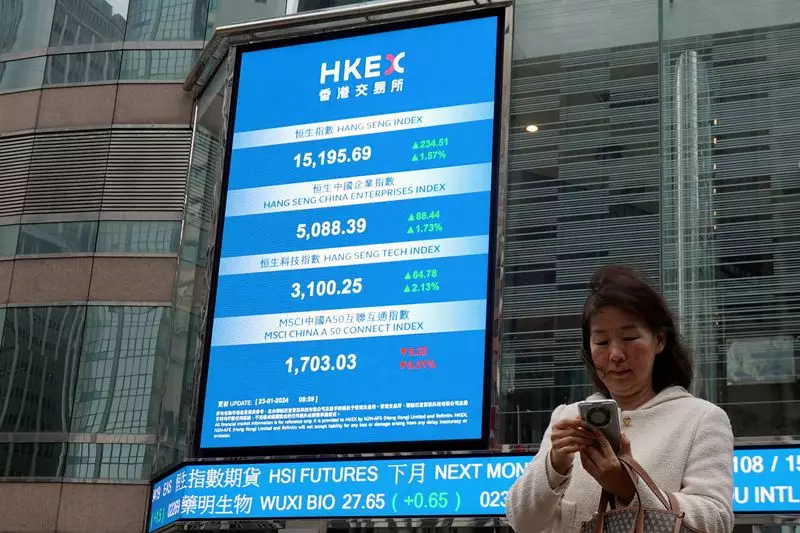As the final trading week of November unfolds, emerging market investors are caught in a web of uncertainty. The landscape is painted with challenges as the ramifications of a robust U.S. economy continue to cast long shadows over Asian markets. With a strong U.S. dollar and rising Treasury yields setting the tone, the question on everyone’s lips is whether this week will bring any respite or strategic opportunities for investors looking to navigate this turbulent environment.
The U.S. dollar has been on an impressive run, strengthening for eight consecutive weeks and eclipsing a two-year high. This surge is not merely a reflection of domestic growth but also an indicator of ongoing divergences in global economic performance. Analysts from TD Securities report that a staggering 70% of capital inflows into developed market bond funds and nearly 90% of equity funds have flowed into U.S. markets over the past 13 weeks. Such figures underscore the gravitational pull of the U.S. economy, posing further challenges for Asian markets that have been struggling amidst geopolitical tensions and economic uncertainties.
The implications of this dollar strength extend beyond mere currency fluctuations; they speak to the broader investor sentiment that favors the stability of U.S. assets over their emerging market counterparts. Indeed, as the dollar strengthens, Asian economies are bracing for continued outflows, as evidenced by the fact that dedicated emerging market bond and equity funds have experienced outflows for six consecutive weeks. China, in particular, appears to be bearing the brunt of this flight, with significant capital draining from its markets.
The general sentiment among investors regarding emerging market assets is decidedly bleak. This pessimism has been highlighted by the dismal performances of the MSCI emerging market and Asia ex-Japan indexes, which have suffered losses in five of the last seven weeks. This ongoing descent has led to questions about the viability of a bounce-back, especially after these indexes recorded steep declines of approximately 4.5%—the most significant drops since mid-2022. Despite these downturns, a rebound of more than 0.5% last week suggests that market players remain hesitant to re-enter the fray.
Moreover, with analysts at SocGen cutting their exposure to emerging markets by five percentage points, bringing their total commitment down to a mere 6%, the outlook for these regions appears increasingly grim. The focus now shifts to macroeconomic indicators and policy decisions from regional central banks that could either provide support or exacerbate existing concerns.
Looking ahead, market liquidity is expected to tighten due to the upcoming Thanksgiving holiday in the U.S., which typically results in decreased trading volumes and increased volatility. The local calendar for Asian markets this week features a range of pivotal economic announcements, including rate decisions from the central banks of New Zealand and South Korea, GDP figures from India and Taiwan, and the latest data on China’s Purchasing Managers Index (PMI).
These upcoming indicators will be instrumental in shaping investor perspectives. With New Zealand retail sales, inflation rates in Singapore, and industrial production data from Taiwan all scheduled for release, attention will be keenly focused on how these figures align with or contradict prevailing economic narratives.
The final trading week of November presents a mixed bag of challenges and opportunities for Asian markets. While the pressures from the U.S. economy loom large, the necessity for carefully strategized investments remains. Investors may need to embrace patience, viewing potential market dips not merely as pitfalls but as opportunities for future gains. The critical balance of waiting for the right moment to act, while keeping a keen eye on emerging data, will determine how stakeholders in the market position themselves as 2024 approaches. The road forward may be fraught with difficulties, but astute investors will remain vigilant, ready to adapt and seize opportunities when they arise.

